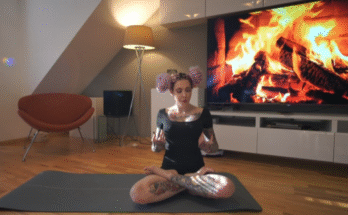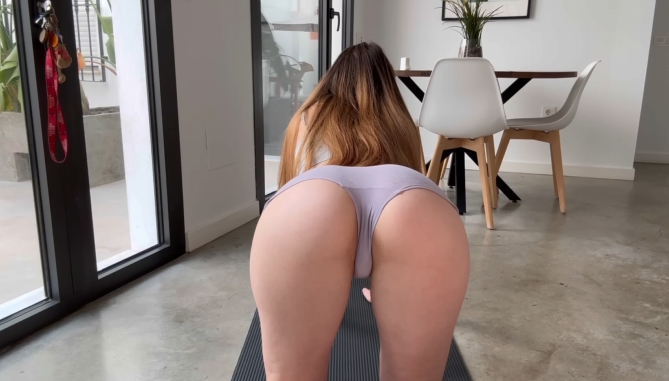
Back pain is one of the most common physical complaints among people of all ages, especially those who spend long hours sitting, standing, or performing repetitive motions. Whether you’re an office worker hunched over a keyboard, an athlete who pushes hard every day, or just someone looking to feel better in your body, stretching from the back can make a big difference in your health and comfort.
In this article, we’ll explore the importance of back stretching, different types of stretches you can try, the benefits you can expect, and some safety tips to help you avoid injury while improving flexibility.
Why Stretching the Back Matters
Your back is a central support system for your body. It’s made up of the spine, muscles, ligaments, and tendons that work together to help you sit, stand, twist, and bend. When these structures become tight, weak, or out of balance, it can cause pain, stiffness, or even limit your movement.
Many people ignore back pain or assume it’s a normal part of life. However, regular stretching can prevent discomfort and improve mobility. It can also reduce the risk of injury by increasing blood flow, warming up muscles, and helping the body move more freely.
What Happens When You Stretch the Back?
When you perform a back stretch, you lengthen the muscles that support your spine. These include:
- Erector Spinae – the muscles running along your spine.
- Latissimus Dorsi – the broad muscles on the sides of your back.
- Trapezius and Rhomboids – the muscles between your shoulders and neck.
- Glutes and Hamstrings – muscles connected to the lower back through the pelvis.
Stretching these muscles not only helps relieve tension in the back but also supports good posture, which can reduce future pain.
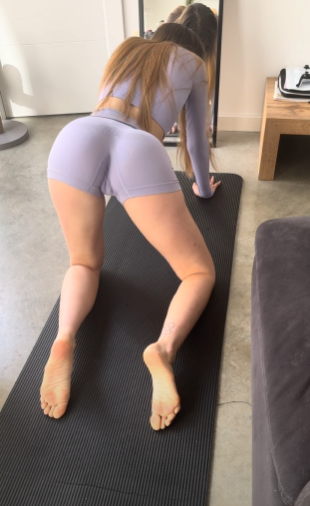
Best Back Stretches to Try
Here are some effective stretches you can do at home, at the gym, or even at work. Always move slowly and breathe deeply through each stretch.
1. Child’s Pose (Yoga Stretch)
How to do it:
Start on your hands and knees. Sit your hips back toward your heels, and stretch your arms forward on the ground. Let your forehead rest on the floor.
What it does:
Gently stretches the lower back, hips, and spine.
Hold for: 30 seconds to 1 minute.
2. Cat-Cow Stretch
How to do it:
Start on hands and knees. On the inhale, arch your back and lift your head and tailbone (Cow). On the exhale, round your spine and tuck your chin (Cat). Repeat slowly.
What it does:
Improves flexibility of the spine and warms up the back.
Repeat: 8–10 times.
3. Knees to Chest
How to do it:
Lie on your back. Pull one knee toward your chest, holding it with both hands. You can do this one leg at a time or both together.
What it does:
Relieves tension in the lower back.
Hold for: 20–30 seconds per leg.
4. Seated Spinal Twist
How to do it:
Sit on the floor with legs extended. Cross your right foot over your left knee, plant it on the floor. Twist your upper body to the right, placing your right hand behind you and left elbow on the outside of the right knee.
What it does:
Stretches the sides of the back and spine.
Hold for: 20–30 seconds, then switch sides.
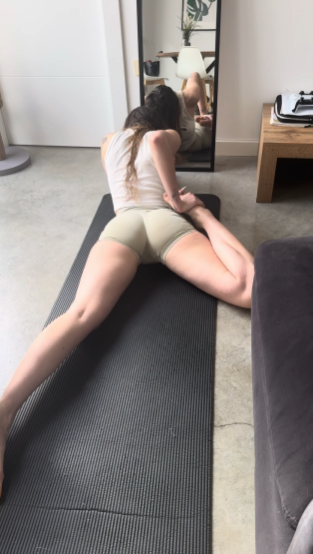
5. Standing Forward Bend
How to do it:
Stand tall, then slowly fold forward from the hips, letting your hands hang toward your feet. Keep a slight bend in the knees if needed.
What it does:
Stretches the lower back, hamstrings, and spine.
Hold for: 30 seconds.
6. Pelvic Tilt
How to do it:
Lie on your back with knees bent. Tighten your abdominal muscles and flatten your lower back against the floor. Hold, then release.
What it does:
Strengthens the lower back and abdominal muscles, which helps posture.
Repeat: 10–12 times.
Benefits of Back Stretching
Stretching regularly can bring many benefits beyond flexibility:
- Pain Relief – Reduces muscle tightness and pressure on the spine.
- Improved Posture – Aligns the spine and strengthens supporting muscles.
- Increased Range of Motion – Makes it easier to move and reach.
- Better Circulation – Boosts blood flow to muscles and joints.
- Stress Reduction – Releases physical and mental tension.
- Prevents Injuries – Keeps muscles flexible and ready for action.
Even five to ten minutes of stretching daily can have noticeable effects, especially when paired with other healthy habits like exercise, hydration, and good sleep.
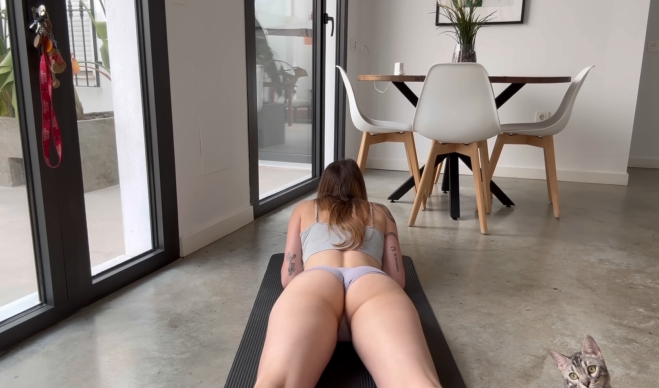
Who Should Stretch the Back?
Everyone can benefit from back stretches, but some groups may need it even more:
- Office Workers: Sitting for long hours causes spinal compression and stiffness.
- Athletes: Sports put pressure on the back, especially in high-impact activities.
- Older Adults: Aging reduces flexibility; stretching helps maintain mobility.
- People with Back Pain: Under a doctor’s guidance, gentle stretches can relieve chronic pain.
If you have any serious back conditions like herniated discs or spinal issues, always consult a healthcare professional before beginning any stretch routine.
Tips for Safe Stretching
- Warm up first – Light movement like walking or arm circles prepares your body.
- Move slowly – Don’t bounce or force a stretch; ease into it.
- Breathe deeply – Helps relax the body and deepens the stretch.
- Avoid pain – Mild discomfort is okay, but never stretch into sharp pain.
- Stay consistent – Make it a part of your daily or weekly routine.
Final Thoughts: Stretching From the Back to a Better Life
Stretching your back is not just about reducing pain — it’s about giving your body the freedom to move, relax, and feel better each day. In our busy lives, we often forget to care for our bodies until pain forces us to pay attention. But just a few minutes of stretching can change your entire day — relieving stress, clearing your mind, and setting you up for better posture and energy.
So, whether you’re starting your morning, taking a break from work, or winding down in the evening, take time to stretch your back. It’s one of the easiest, most natural ways to reconnect with your body and support lifelong health.

